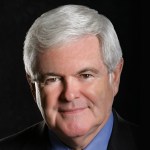Nobel Prize winning economist Paul Krugman said that interest payments on existing debt are not going to be a major headache going forward. Well, even Nobel Prize winners can be wrong. Consider the Congressional Budget Office, which has a very cautious estimate of what’s going to happen in the future has the interest payments on the debt rising from 663 billion now to 1,440,000,000,000. In 2032, that’s an increase of 117 percents. Meanwhile, GDP over that period is only going to grow about 50%. So interest payments on the debt are gonna go twice as fast as the economy. And it doesn’t take any mathematical sophistication to know that going something twice as fast as the economy is not a way that’s sustainable. Now, CBO has a very low interest rate assumption. If we were to take just current interest rates, in other words, that they won’t fall arise, interest instead will rise to 2,290,000,000,000, or 59%, higher than what CBO says, and three and a half times what it is today. That will take it up to 5.7% of GDP. And by 2043 10 years later, the interest on the debt is going to consume 8% of GDP, which is three and a half times as much as now, another five and a half percent of GDP is on the order of half of all that personal income taxes we collect, that’s going to be a major problem going forward. Now, it can get worse, because the current curve is what’s called inverted, the long term rates are lower than the short term rates. And that’s an unusual situation. So if the curve were to D invert, the cost of interest would go even higher. For example, by 2033, we would have a $2.8 trillion interest payment, or 7.8% of GDP, and by 2043, it would be 10.4% of GDP. These are numbers that take us into lala land when it comes to being able to actually service the debt. Now, what Krugman probably forgot in it, in his analysis was that all the existing debt is going to roll over. And it’s going to roll over into much, much higher rates. Just look at when the current debt was issued. In the last 15 years, when most of it was issued, the 10 year bond, for example, spent only 14 months, over 2% and 34 months in those 15 years, over 1%. Now, it’s about 5% yield, it gets worse with regard to the 10 year yield. So when all of this debt rolls over, we’re going to see higher and higher interest expenses. Because like any homeowner who sells his home and buys a new one, it’s going to be taking out a mortgage at a much higher rate. And that’s what’s going to kill the US budget by driving up interest costs. Now, where I agree with Krugman is this is not going to lead to a default by the US government. Now, the government generally will not do such a thing. Instead, it will simply print the money to cover the extra debt. This is called quantitative easing. It’s something that we did for quite a bit during the last period. Now long term, is that inflationary? Absolutely. But it’s not a default. Instead of defaulting on the debt, the government is simply going to inflate it away. This is Larry Lindsey for straight arrow News.
















Larry Lindsey
President & CEO, The Lindsey Group
Commentary
Our commentary partners will help you reach your own conclusions on complex topics.
Is the US looking for a war?
7 hrs ago
Peter Zeihan
How future generations could shift US support for Israel
Yesterday
Peter Zeihan
Why election of European Commission president is so important
Wednesday
Peter Zeihan
‘Both completely corrupt’: What Americans think of Biden, Trump
Tuesday
Dr. Frank Luntz
US debt interest is cause for concern
Larry Lindsey
President & CEO, The Lindsey Group
By Straight Arrow News
Economist Paul Krugman recently said that interest payments on U.S. debt won’t be a major concern in the years ahead. The U.S. national debt is almost at $33 trillion, and the interest payments alone on that debt are approaching $500 billion per year.
Straight Arrow News contributor Larry Lindsey disagrees with Krugman and instead urges Americans to consider just how serious of a concern the national debt might become. Lindsey uses recent data and observations to project alarming scenarios that demand our attention.
Well, even Nobel Prize winners can be wrong.
Consider the Congressional Budget Office, which has a very cautious estimate of what’s going to happen in the future…has the interest payments on the debt rising from $663 billion now to $1,440,000,000,000 in 2032. That’s an increase of 117%. Meanwhile, GDP over that period is only going to grow about 50%.
So interest payments on the debt are going to grow twice as fast as the economy. And it doesn’t take any mathematical sophistication to know that growing something twice as fast as the economy is not a way that’s sustainable.
Now, CBO has a very low interest rate assumption. If we were to take just current interest rates, in other words, that they won’t fall or rise, interest instead will rise to $2,290,000,000,000, or 59% higher than what CBO says, and three and a half times what it is today. That will take it up to 5.7% of GDP.
And by 2043, 10 years later, the interest on the debt is going to consume 8% of GDP, which is three and a half times as much as now.
Nobel Prize winning economist Paul Krugman said that interest payments on existing debt are not going to be a major headache going forward. Well, even Nobel Prize winners can be wrong. Consider the Congressional Budget Office, which has a very cautious estimate of what’s going to happen in the future has the interest payments on the debt rising from 663 billion now to 1,440,000,000,000. In 2032, that’s an increase of 117 percents. Meanwhile, GDP over that period is only going to grow about 50%. So interest payments on the debt are gonna go twice as fast as the economy. And it doesn’t take any mathematical sophistication to know that going something twice as fast as the economy is not a way that’s sustainable. Now, CBO has a very low interest rate assumption. If we were to take just current interest rates, in other words, that they won’t fall arise, interest instead will rise to 2,290,000,000,000, or 59%, higher than what CBO says, and three and a half times what it is today. That will take it up to 5.7% of GDP. And by 2043 10 years later, the interest on the debt is going to consume 8% of GDP, which is three and a half times as much as now, another five and a half percent of GDP is on the order of half of all that personal income taxes we collect, that’s going to be a major problem going forward. Now, it can get worse, because the current curve is what’s called inverted, the long term rates are lower than the short term rates. And that’s an unusual situation. So if the curve were to D invert, the cost of interest would go even higher. For example, by 2033, we would have a $2.8 trillion interest payment, or 7.8% of GDP, and by 2043, it would be 10.4% of GDP. These are numbers that take us into lala land when it comes to being able to actually service the debt. Now, what Krugman probably forgot in it, in his analysis was that all the existing debt is going to roll over. And it’s going to roll over into much, much higher rates. Just look at when the current debt was issued. In the last 15 years, when most of it was issued, the 10 year bond, for example, spent only 14 months, over 2% and 34 months in those 15 years, over 1%. Now, it’s about 5% yield, it gets worse with regard to the 10 year yield. So when all of this debt rolls over, we’re going to see higher and higher interest expenses. Because like any homeowner who sells his home and buys a new one, it’s going to be taking out a mortgage at a much higher rate. And that’s what’s going to kill the US budget by driving up interest costs. Now, where I agree with Krugman is this is not going to lead to a default by the US government. Now, the government generally will not do such a thing. Instead, it will simply print the money to cover the extra debt. This is called quantitative easing. It’s something that we did for quite a bit during the last period. Now long term, is that inflationary? Absolutely. But it’s not a default. Instead of defaulting on the debt, the government is simply going to inflate it away. This is Larry Lindsey for straight arrow News.
Election 2024 will boil down to the Great Lakes states
Pollsters and pundits have been engaged in a long debate about how Biden or Trump might win the 2024 election, with much of their focus spent on the “swing state” electoral battlegrounds. While the winners of Alabama or California may be obvious, for instance, who wins Pennsylvania is a more difficult question. Watch the above…
Jun 10
Why the Fed should consider Theory of Reflexivity when fixing policy
The Theory of Reflexivity, often used in the context of economics and financial markets, implies that investors don’t base their decisions on reality but on their perceptions of reality. This creates a feedback loop where investors’ perceptions influence economic fundamentals, which in turn alter investor perceptions. Watch the above video as Straight Arrow News contributor…
Jun 3
Federal Reserve surpassed its own wildest expectations
On May 14, the U.S. Bureau of Labor Statistics released the most current producer price index (PPI) report, which showed an increase of 0.5% month-over-month in April. After the report’s release, U.S. Federal Reserve chairman Jerome “Jay” Powell said that while he believes the current policy rate is restrictive by many measures, the Fed needs…
May 20
Polls give slight advantage to Trump in Electoral College
With the U.S. general election only six months away, leading candidates President Joe Biden and former President Donald Trump appear to be engaged in a very close contest. In their 2020 race, the winner of the Electoral College was ultimately determined by a relative handful of voters in just a few swing states, even though…
May 13
College sports is big money but not everyone benefits
March Madness has wrapped up and Caitlin Clark has emerged as a household name as well as a wealthy student athlete. Earning over $3 million throughout her college career, her success stands in stark contrast to the previous notion that collegiate athletes shouldn’t earn anything beyond their scholarship. Straight Arrow News contributor Larry Lindsey examines…
Apr 29
Underreported stories from each side
Group accuses Pa. teachers union of illegally using money to back Shapiro’s 2022 campaign
8 sources | 0% from the left
Getty Images
Some House Republicans slam Vance as Trump’s VP pick: ‘The worst choice’
8 sources | 0% from the right
Reuters
Latest Stories
Congress still trying to figure out how to reduce wasteful military spending
Watch 2:29
2 hrs ago
US Navy, Air Force making waves with new weapons at RIMPAC
Watch 6:03
2 hrs ago
Israeli PM Netanyahu meets with Trump at Mar-a-Lago
Watch 2:54
2 hrs ago
Growing US nuclear power resurgence reaches the nation’s heartland
Watch 1:19
2 hrs ago
Beer from the sun, other solar thermal projects get government funding
Watch 2:04
2 hrs ago
Popular Opinions
In addition to the facts, we believe it’s vital to hear perspectives from all sides of the political spectrum.
Trump has an excellent opportunity with Black voters
7 hrs ago
Star Parker
Don’t fall for GOP’s cheap racist attacks on Kamala Harris
8 hrs ago
Dr. Rashad Richey
Americans must reject Trump to defend our democracy
Yesterday
Jordan Reid
Why all the changes in European parliamentary governments?
Wednesday
Newt Gingrich